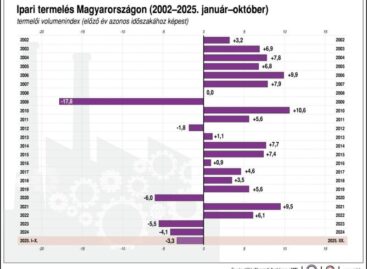A new era may begin in domestic apricot production
Hungarian apricot orchards suffered severe damage this year due to spring frosts: in most of the growing areas, 70–95 percent of the crop was destroyed, Ákos Mendel, a scientific associate at the Institute of Horticulture of the Hungarian University of Agricultural and Life Sciences, told InfoRádió. According to the expert, in order to increase crop security and improve the economics of cultivation, it is necessary to rethink the entire production structure.
Frost tolerance and choice of growing location are the key
Spring frosts pose a serious challenge every year, especially for growers of apricot, peach and early-flowering cherry varieties. Ákos Mendel emphasized that although damage cannot be completely avoided, the appropriate choice of variety and growing location, as well as the use of modern technological elements, can greatly reduce losses.
“Late-flowering, frost-tolerant fruit varieties are needed, along with good commercial quality and adequate yield,”
he added.
Low-lying areas, high risk
Currently, 35–40 percent of apricot plantations are located in the southern part of Pest County, as well as in Jász-Nagykun-Szolnok and Bács-Kiskun counties – these low-altitude areas are particularly sensitive to late spring frosts. The remaining 60–65 percent, however, are located in higher-lying areas, such as the Northern Central Mountains or the Somogyi Hills, where the trees perform better even in frost-damaged years.
The solution lies in research and development
A comprehensive research and development project has already been launched in cooperation with the National Chamber of Agriculture, MATE and producers, which aims to reorganize production areas, plant new varieties and develop technologies.
Related news
Large companies expect easing inflationary pressures and decreasing public burdens
🎧 Hallgasd a cikket: Lejátszás Szünet Folytatás Leállítás Nyelv: Auto…
Read more >The GKI business climate index closed 2025 at a one and a half year high
🎧 Hallgasd a cikket: Lejátszás Szünet Folytatás Leállítás Nyelv: Auto…
Read more >KSH: industrial production decreased by 2.7 percent in October compared to the same period of the previous year, and increased by 0.5 percent compared to the previous month
🎧 Hallgasd a cikket: Lejátszás Szünet Folytatás Leállítás Nyelv: Auto…
Read more >Related news
Christmas shock in commerce: for the first time, we can pay with bank cards in fewer places
🎧 Hallgasd a cikket: Lejátszás Szünet Folytatás Leállítás Nyelv: Auto…
Read more >Hungarian Confectionery Manufacturers Association: trends in 2025 and prospects for 2026
🎧 Hallgasd a cikket: Lejátszás Szünet Folytatás Leállítás Nyelv: Auto…
Read more >Most grocery chains will be open until noon on December 24th
🎧 Hallgasd a cikket: Lejátszás Szünet Folytatás Leállítás Nyelv: Auto…
Read more >






